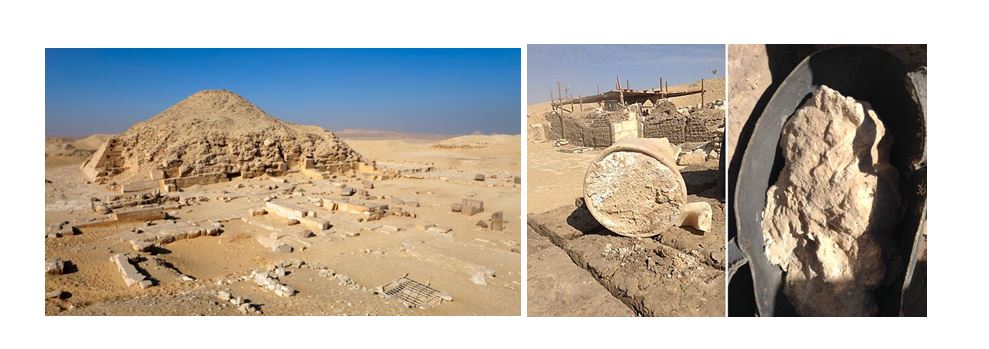By: Cassie Martin
SAY CHEESE this lump of 3,200-year-old cheese found in an ancient Egyptian tomb shows signs of having been contaminated with bacteria that cause the disease brucellosis.
What may be the oldest known solid cheese has been found in an ancient Egyptian tomb.
Made from a mixture of cow milk and either sheep or goat milk, the cheese filled a broken clay jar unearthed from a 13th century B.C. tomb for Ptahmes, the mayor of the ancient city of Memphis, researchers report online July 25 in Analytical Chemistry.
Chemist Enrico Greco, who did the work while at the University of Catania in Italy, and colleagues used mass spectrometry to analyze the antique cheese — now a white, soapy lump weighing “several hundred grams.” Besides milk and whey proteins, the cheese contained remnants of bacteria that cause an infection called brucellosis, adding to evidence that ancient Egyptians may have grappled with the disease, Greco says.
As you are probably aware, cheese and honey are often paired to make a delicate snack that’s far better than either alone. So we asked Honey Connoisseur Marina Marchese, President of the American Honey Tasting Society, what the perfect honey would be to pair with this very old piece of cheese. Her response…
“When I read about the world’s oldest cheese discovered in an Egyptian tomb,
I was not surprised to learn that it was cursed with a deadly bacteria that could kill you.
In spite of this alarming fact, I couldn’t help but to contemplate the perfect
honey to drizzle over this new stinky discovery.
What came to mind was a honey that was equally notorious – The
“Mad Honey” of Turkey produced from certain species in the Rhododendron family.
The nectar is laced with grayanotoxins that causes one to hallucinate by lowering your blood pressure.
Last year, I had the pleasure to taste a drop Mad honey at Apimondia Istanbul, it numbed my tongue and made me see stars.
This just might be the perfect honey to seduce one to even consider ingesting a disease ridden cheese that is over 3,000 years old.”
There is an Egyptian proverb that goes…
“For every joy there is a price to be paid.”
Cheese making predates the new find by thousands of years, but preserved cheese is hard to come by. Archaeologists found older curds draped around the necks of Bronze Age mummies in China, a different group of researchers reported in 2014 in the Journal of Archaeological Science. “There are other samples of dairy products in the literature, but not solid cheeses in the strict sense,” Greco says.
He says he did not sniff the cheese, but given its degraded state it is unlikely to have an odor, pleasant or not.







